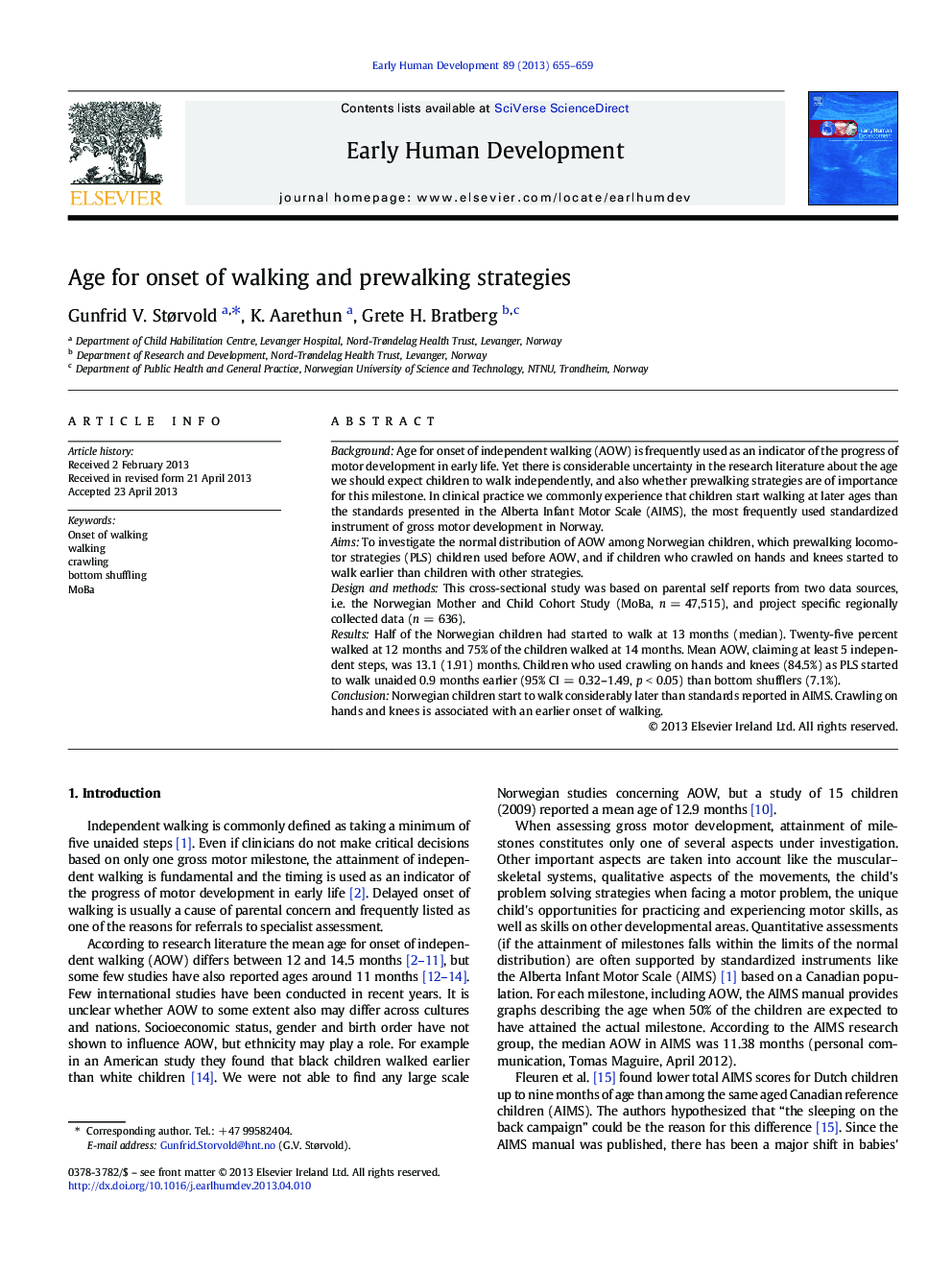| Article ID | Journal | Published Year | Pages | File Type |
|---|---|---|---|---|
| 6172295 | Early Human Development | 2013 | 5 Pages |
BackgroundAge for onset of independent walking (AOW) is frequently used as an indicator of the progress of motor development in early life. Yet there is considerable uncertainty in the research literature about the age we should expect children to walk independently, and also whether prewalking strategies are of importance for this milestone. In clinical practice we commonly experience that children start walking at later ages than the standards presented in the Alberta Infant Motor Scale (AIMS), the most frequently used standardized instrument of gross motor development in Norway.AimsTo investigate the normal distribution of AOW among Norwegian children, which prewalking locomotor strategies (PLS) children used before AOW, and if children who crawled on hands and knees started to walk earlier than children with other strategies.Design and methodsThis cross-sectional study was based on parental self reports from two data sources, i.e. the Norwegian Mother and Child Cohort Study (MoBa, n = 47,515), and project specific regionally collected data (n = 636).ResultsHalf of the Norwegian children had started to walk at 13 months (median). Twenty-five percent walked at 12 months and 75% of the children walked at 14 months. Mean AOW, claiming at least 5 independent steps, was 13.1 (1.91) months. Children who used crawling on hands and knees (84.5%) as PLS started to walk unaided 0.9 months earlier (95% CI = 0.32-1.49, p < 0.05) than bottom shufflers (7.1%).ConclusionNorwegian children start to walk considerably later than standards reported in AIMS. Crawling on hands and knees is associated with an earlier onset of walking.
